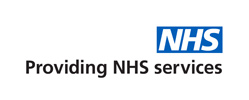Accessibility statement for Stickney Surgery
This accessibility statement applies to this website. This website is built on the default template provided by GPsurgery.net. The practice can edit the website content. This may inadvertently introduce non-accessible content. We will always respond to and resolve any accessibility issues promptly and courteously.
This website is run by Stickney Surgery. We want as many people as possible to be able to use this website. For example, that means you should be able to:
- zoom in up to 300% without the text spilling off the screen
- navigate most of the website using just a keyboard
- navigate most of the website using speech recognition software
- listen to most of the website using a screen reader (including the most recent versions of JAWS, NVDA and VoiceOver)
- submit a form using just a keyboard
We’ve also made the website text as simple as possible to understand.
AbilityNet has advice on making your device easier to use if you have a disability.
How accessible this website is
We know some parts of this website are not fully accessible:
- you cannot modify the line height or spacing of text
- most older PDF documents are not fully accessible to screen reader software
- you may not be able to use the map on our Practice Boundary page – call or email us using the details below for details in another format
Feedback and contact information
If you need information on this website in a different format like large print, easy read, audio recording or braille:
- email [add email address]
- call [add phone number]
- [add any other contact details]
We’ll consider your request and get back to you in [number] days.
Reporting accessibility problems with this website
We’re always looking to improve the accessibility of this website. If you find any problems not listed on this page or think we’re not meeting accessibility requirements, contact: [provide details of how to report these issues to your organisation, and contact details for the person responsible for dealing with these reports].
Enforcement procedure
The Equality and Human Rights Commission (EHRC) is responsible for enforcing the Public Sector Bodies (Websites and Mobile Applications) (No. 2) Accessibility Regulations 2018 (the ‘accessibility regulations’). If you’re not happy with how we respond to your complaint, contact the Equality Advisory and Support Service (EASS).
[Note: if your organisation is based in Northern Ireland, refer users who want to complain to the Equalities Commission for Northern Ireland (ECNI) instead of the EASS and EHRC.]
Contacting us by phone or visiting us in person [Edit or remove this section as appropriate]
We provide a text relay service for people who are D/deaf, hearing impaired or have a speech impediment.
Our practice has audio induction loops, or if you contact us before your visit we can arrange a British Sign Language (BSL) interpreter.
Find out how to contact us [add your preferred contact details relating to phoning or visiting the practice].
Technical information about this website’s accessibility
[Note: this form of wording is legally required, so do not change it.]
[Name of practice or organisation that owns the practice] is committed to making its website accessible, in accordance with the Public Sector Bodies (Websites and Mobile Applications) (No. 2) Accessibility Regulations 2018.
Compliance status
[There’s a legally required way of expressing the compliance status of your website, so do not change it.]
This website is partially compliant with the Web Content Accessibility Guidelines version 2.1 AA standard, due to the non-compliances and exemptions listed below.
Non-accessible content
The content listed below is non-accessible for the following reasons.
[insert list of content]
Disproportionate burden
[Note: in this subsection list accessibility problems you’re claiming would be a disproportionate burden to fix.
Bear in mind that something which is a disproportionate burden now will not necessarily be a disproportionate burden forever. If the circumstances change, your ability to claim disproportionate burden may change too.]
Content that’s not within the scope of the accessibility regulations
[Note: in this subsection list accessibility problems that fall outside the scope of the accessibility regulations if you are aware of any.]
PDFs and other documents
Some of our PDFs and Word documents are essential to providing our services.
We link to the GMS1 patient registration form hosted by the Government. This document is outside our control and consequently falls outside the scope of the accessibility regulations. [Delete if you don’t do this]
We also have PDFs with information on how users can access our services, and forms published as Word documents. By [insert date], we plan to either fix these or replace them with accessible HTML pages.
The accessibility regulations do not require us to fix PDFs or other documents published before 23 September 2018 if they’re not essential to providing our services.
For example, we do not plan to fix: [Add examples of non-essential documents or delete if not appropriate].
Any new PDFs or Word documents we publish will meet accessibility standards.
What we’re doing to improve accessibility
Our website is provided by GPsurgery.net. Website accessibility is an essential part of providing high quality websites for NHS GP practices. GPsurgery.net reviews the accessibility of their website templates as part of their regular development cycle and will always support our practice to resolve any accessibility issues should they arise.
Preparation of this accessibility statement
[Note: the wording about when the statement was prepared is legally required, so do not change it.]
This statement was prepared on [date when it was first published on your website]. It was last reviewed on [date when it was last reviewed].
The standard website template was last tested on 05.01.2022. The test was carried out by GPsurgery.net.
This website is based on a series of standard page templates. We tested the Home page, a standard text-based page, a standard page that includes a form, the Team page, the News page and an individual news item to ensure a representative proportion of the website was tested.
This website was last tested by the practice on [date]. The test was carried out by [add name of organisation that carried out the test or indicate that you did your own testing].


